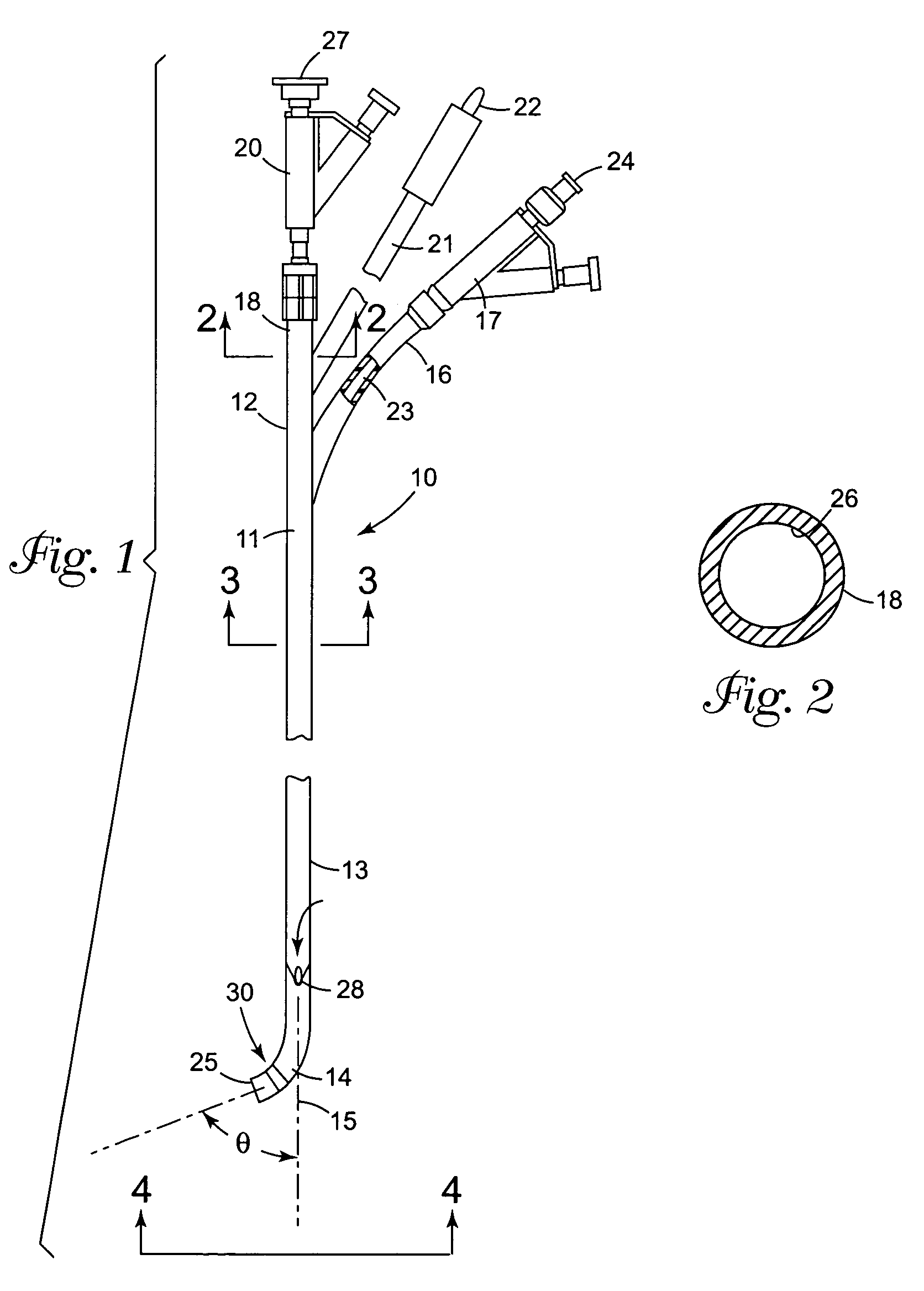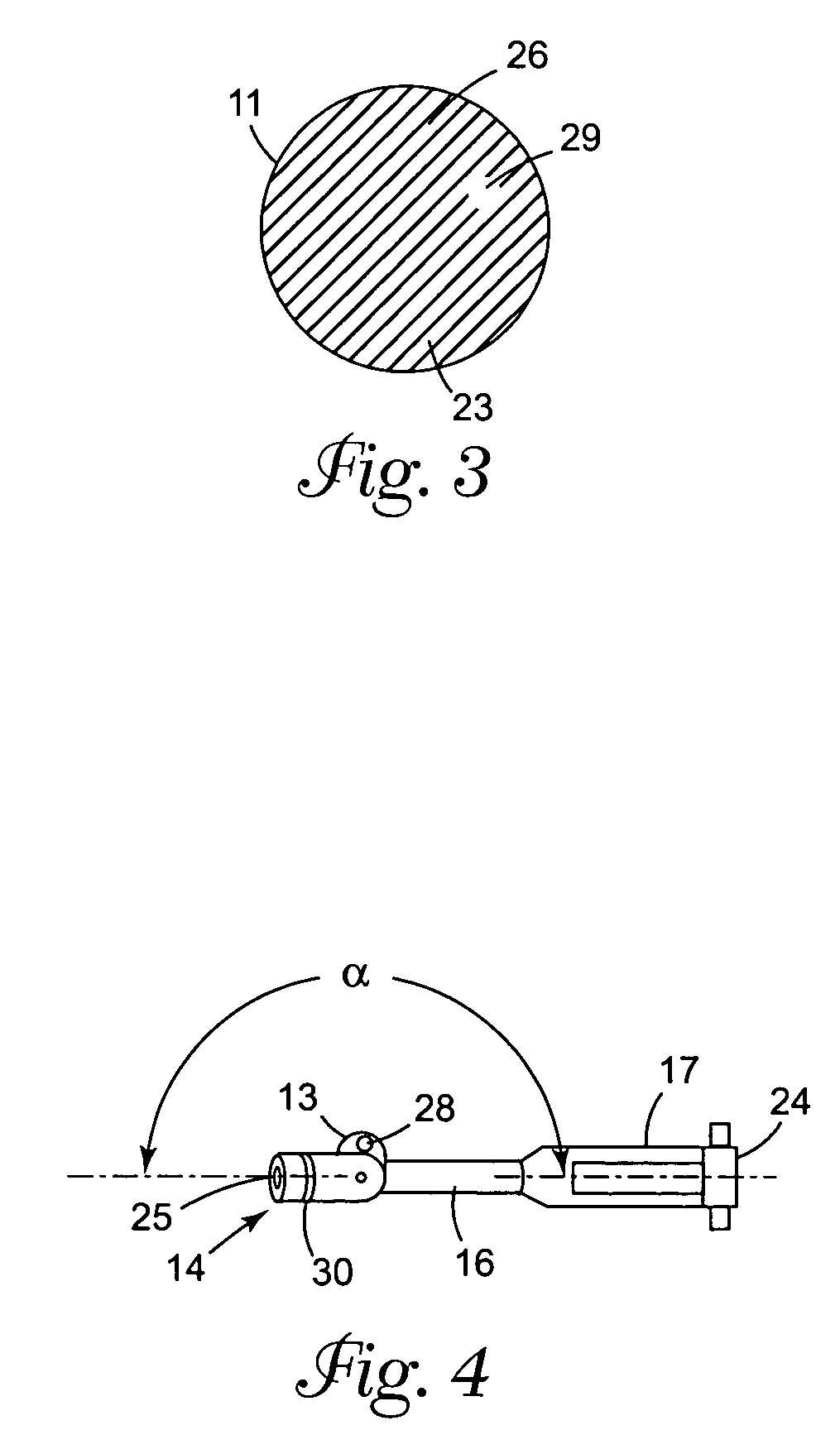System and method for accessing the coronary sinus
a system and catheter technology, applied in the field of intravascular catheters, can solve the problems of insufficient blood flow to the patient's kidneys, lack of stamina, shortness of breath, etc., and achieve the effect of facilitating the location of the patient's coronary sinus ostium
- Summary
- Abstract
- Description
- Claims
- Application Information
AI Technical Summary
Benefits of technology
Problems solved by technology
Method used
Image
Examples
Embodiment Construction
[0041]FIGS. 1 through 4 illustrate a tubular support member 10 embodying features of the invention which generally includes an elongated shaft 11 with a proximal shaft section 12, a distal shaft section 13 and a distal tip 14 which curves away from the longitudinal axis 15 an angle θ. The angle may vary depending upon the desired attack angle to the coronary sinus opening but generally will be from about 20° to about 70°, preferably about 30° to about 60°. The distal tip 14 may be preshaped with the prescribed angular orientation with respect to the longitudinal axis 15 or the tubular support member 10 may be provided with one or more control strands or wires (not shown) within the wall thereof which may be manipulated from the proximal end of the tubular member 10 to configure the distal tip to the desired shape after distal tip is disposed within the patient's right atrium.
[0042]The proximal shaft section 12 includes a first proximal extension 16 which has an adapter 17 on the pro...
PUM
 Login to View More
Login to View More Abstract
Description
Claims
Application Information
 Login to View More
Login to View More - R&D
- Intellectual Property
- Life Sciences
- Materials
- Tech Scout
- Unparalleled Data Quality
- Higher Quality Content
- 60% Fewer Hallucinations
Browse by: Latest US Patents, China's latest patents, Technical Efficacy Thesaurus, Application Domain, Technology Topic, Popular Technical Reports.
© 2025 PatSnap. All rights reserved.Legal|Privacy policy|Modern Slavery Act Transparency Statement|Sitemap|About US| Contact US: help@patsnap.com



